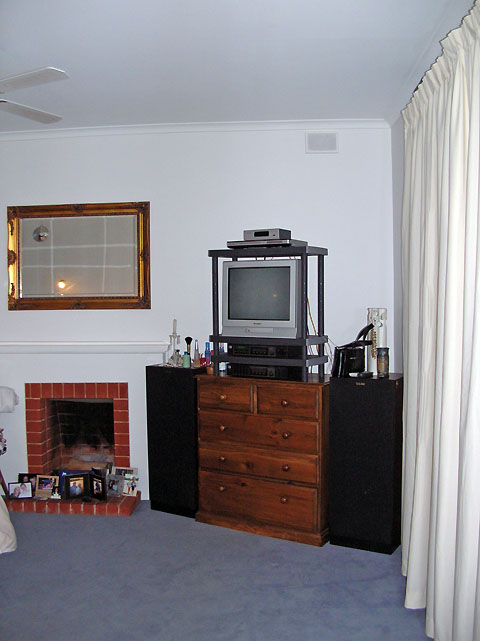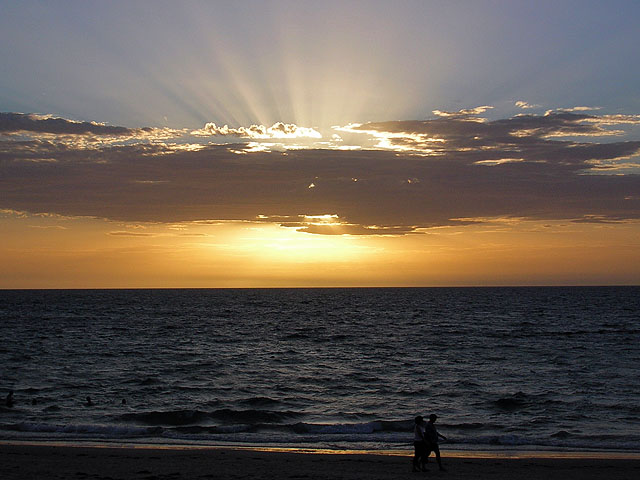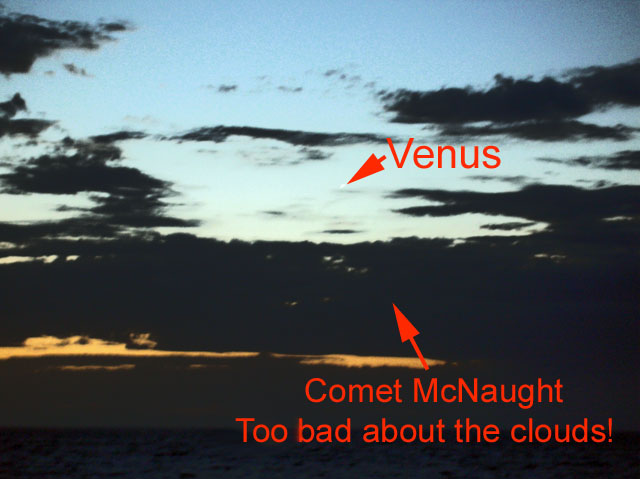
![]()
Finished Bedroom and Comet McNaught

The finish room with new curtains Sue and Sarah made....

Just the large photographs on the blue wall to finish.....

At the beach hoping to see Comet McNaught.....

Great sunset but not looking good for comet viewing......

What could have been..... Comet McNaught (not!)
Comet McNaught was discovered by Australian astronomer Robert H. McNaught in August 7, 2006, while looking at a photograph taken from the Siding Spring Observatory near Coonabarabran in northwestern New South Wales, Australia. At that time, the comet was a faint and distant object. But, now, in January 2007, its orbital motion indicates that Comet McNaught (officially catalogued as C/2006 P1) might provide sky-watchers with dramatic views as it flashes around the Sun.
In January 2007, Comet McNaught will be visible to the unaided eye both at sunset and sunrise when the horizon is viewed without any obstructions. It will be visible near the planet Venus and the constellations Aquila (near the celestial equator) and Ophiuchus (in the southern hemisphere). When the Sun is rising in the east the comet is seen just ahead of the Sun, and at sunset, the comet appears in the west just after the Sun sets under the horizon. The use of binoculars will show its gaseous tail. The best places in the northern hemisphere to see Comet McNaught is in Canada, the Scandinavian countries, and Alaska. However, it has been seen as far south as the Midwestern states in the United States and in France, Spain, and Italy in Europe.
|
|
|
|
® Design by Whitehouse Ink |
|